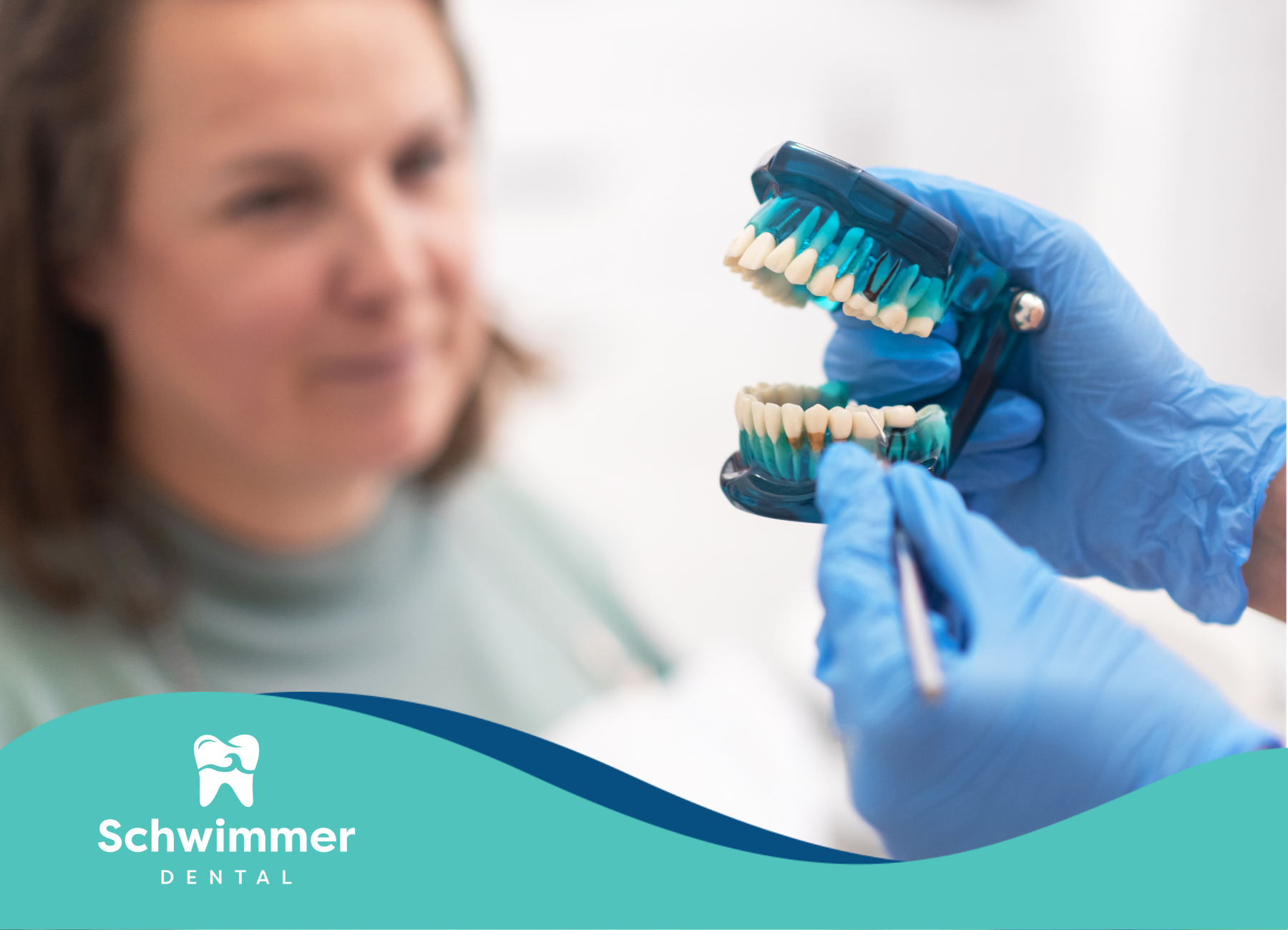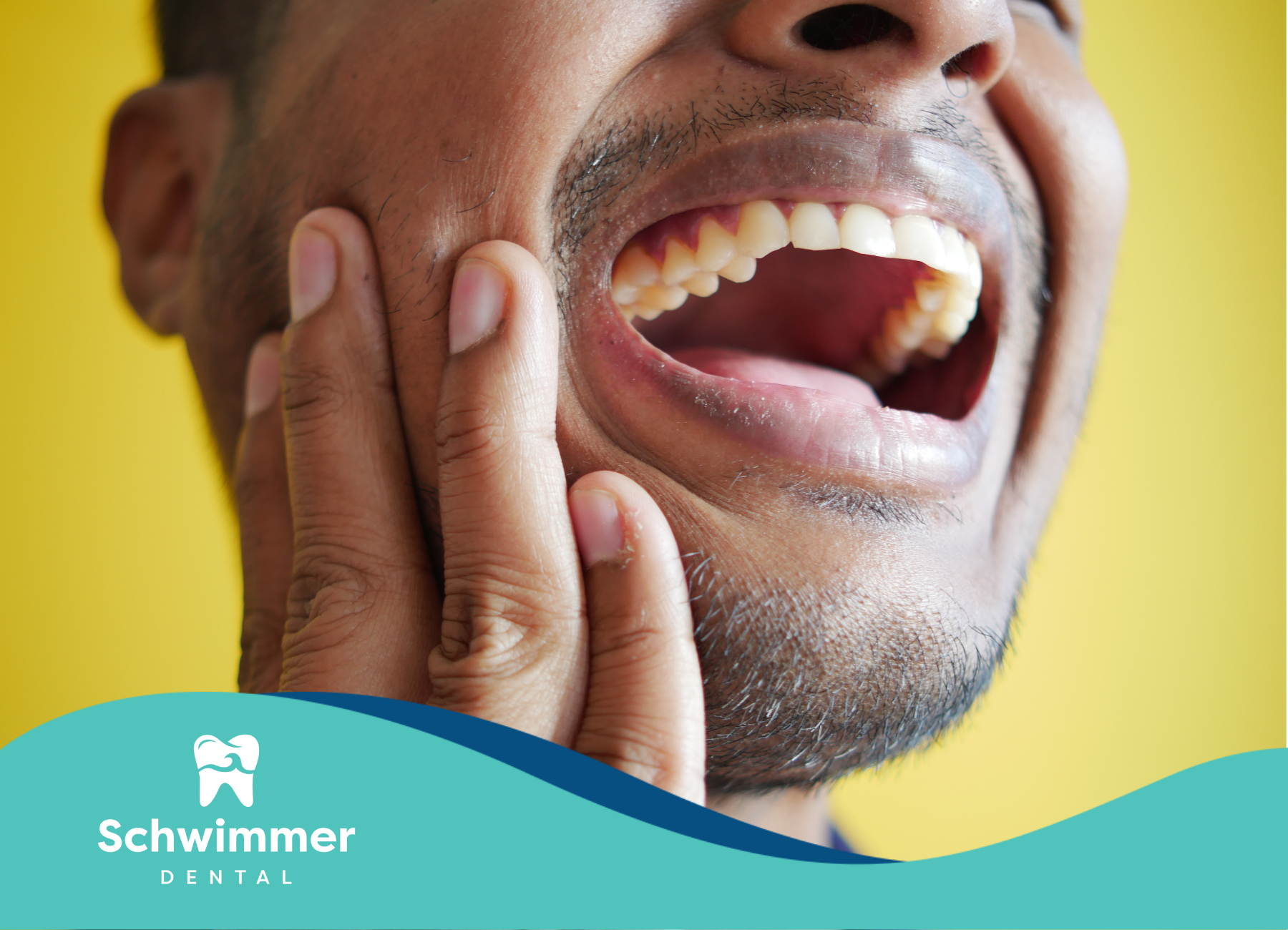Have an appointment? Complete the Intake Form
Identifying Baby Teeth Decay Causes
Understanding Baby Teeth Decay
Impact of Baby Teeth Decay
So, those tiny, adorable pearly whites we coo over—the ones that start sprouting around the six-month mark—aren't just for show. Sadly, those little teeth can start decaying just as they emerge. If you don't address it, you're looking at a recipe for trouble: pain, spreading infection, and worst-case, goodbye baby teeth. And it’s not just the immediate ouch-fest for your kid—trouble here can make it tough for your child to munch on their broccoli or even string words together properly. Plus, those first teeth keep a cozy spot for the big, permanent teeth to settle in nice and straight later on.
| Impact of Baby Teeth Decay | Effects |
|---|---|
| Pain | Creates discomfort and endless tears for the kiddo. |
| Infection | Can go wild, leading to bigger, nastier problems. |
| Chewing & Speaking | Ouch, can't eat much or chat freely without trouble. |
| Long-Term Alignment | Losing them too soon might cramp new teeth’s style. |
| Nutritional Intake | Munching suffers, diet goes downhill. |
Connection to Adult Tooth Health
Those tiny teeth actually set the stage for the grown-up chompers. Kids with cavity-party baby teeth tend to carry the tradition into adulthood. This points out why it's a big deal to get oral care right from the start.
You want your child biting into a crunchy apple without a hitch? Healthy baby teeth help that happen, plus they work wonders for clear talky-talk. Setting the foundation for adult teeth is crucial. Not caring for baby teeth might mess up more than just a smile—hugging regular dentist visits and teaching the kiddos how to brush properly makes a difference. For more tips on this, slide over to our child-friendly dental care and children's oral hygiene tips pages.
Causes and Effects
Grasping why those tiny baby teeth rot can really help out parents and caregivers. A little knowledge and a quick action plan can dodge bigger dental disasters down the road.
Early Onset of Tooth Decay
Tooth decay in those first chompers can start as soon as they peek out, usually around six months old. It's wild how fast cavities can move in if you don’t jump on oral hygiene early. Let them go, and you're looking at a world of hurt, infections, and bye-bye baby teeth.
| Age (Months) | Risk of Tooth Decay |
|---|---|
| 6-12 | High |
| 12-24 | Increased |
| 24-36 | Highest |
Letting those baby teeth bite the dust can mean a rough road ahead for grown-up teeth too. Keeping those tiny teeth in tip-top shape is crucial—it’s like setting the stage for a future full of strong, healthy teeth.
Health Risks of Untreated Decay
Skipping out on dealing with tooth decay in baby teeth isn't just a bummer for the mouth—it's bad news for the whole kid. That nagging throb can make eating tough, leading to poor nutrition and stunting growth. Messed up baby teeth can also throw a wrench in chewing and talking clearly, which are super important for a kid growing up.
If you let decay fester, it can morph into bigger dental nightmares later. Infection could spread if decay isn't tackled, raising the risk of bigger mouth or health issues.
Knowing what’s what about why baby teeth decay matters can really put parents in the driver’s seat for good oral health. Nailing down solid children's oral hygiene tips and frequent dentist visits helps dodge these dental threats. It's worth chatting about handy options like dental sealants for children and other nifty tactics to fight pediatric dental cavities with a friendly neighborhood dentist.
Prevention and Early Care
Keeping those tiny baby teeth free from decay sets the stage for healthy grown-up grins later. From the get-go, folks in a kiddo’s life have a big part to play by introducing easy early care routines and oral hygiene.
Starting Oral Care Habits
Parents might wonder how to make sure little ones have pearly whites that stay healthy. It begins by making oral care a normal part of life from a very early age. Start brushing with fluoride toothpaste right when that first tooth pops up. Keep an eye on your little one's brushing technique until they get it down—usually by age 7. There’s a world of difference when parents know the ropes of oral hygiene, like getting the knack for soft-brushing and flossing.
Here’s the scoop on getting kids clued into oral care:
| Habit | Recommended Age |
|---|---|
| Start brushing with fluoride toothpaste | When the first tooth peeks in (around 6 months) |
| Begin flossing | When teeth buddy up (around 2-3 years old) |
| Schedule regular dental check-ups | By age 1 |
Feeding kids right also goes a long way. Steering clear of sugary snacks and drinks can set them up with munching habits that are kind to teeth.
Baby's First Dental Visit: Why It Matters
A baby’s first trip to the dentist should happen by age 1. This first date with the dentist checks out what’s going on in your little one’s mouth, catching any iffy spots before they become big issues. It’s also a chance to pick the dentist’s brain about oral care, food choices, and handy add-ons like dental sealants for children.
Those baby chompers help kids crunch on good food, get chatty, and make room for the grown-up teeth lurking just beneath the gums. Starting off on the right foot with the dentist means fewer worries and better habits as kiddos grow up. Curious about more pediatric dental topics? Check out our insights on pediatric dental cavities.
Staying on the ball with oral care routines and keeping up with those dental visits puts parents in the driver’s seat to stop baby teeth decay and keep kids smiling hale and hearty.
Nutrition and Dental Health
Caring for those tiny teeth isn’t just about brushing and flossing. Nutrition's a big player in keeping kids' pearly whites healthy and fighting off those pesky cavities. Know your stuff about the good stuff—like calcium and vitamin D—and watch that sweet tooth!
Role of Calcium and Vitamin D
Calcium is the superstar for building up strong teeth and bones. It's like the armor on those teeth, keeping decay at bay. Think milk, cheese, and yogurt—all the tasty dairy stuff your kids probably already love.
And don't forget about vitamin D. It’s the sidekick to calcium, helping it do its thing. Sunlight, a bit of fish, and egg yolks all pitch in on this front.
| Nutrient | Importance | Sources |
|---|---|---|
| Calcium | Builds strong enamel; resists decay | Milk, cheese, yogurt |
| Vitamin D | Helps absorb calcium; vital for teeth | Sunlight, fatty fish, eggs, fortified dairy |
Impact of Sugar Intake
Sugar and teeth? Not friends. Those sneaky mouth bacteria love a sugar party, and they end up crashing it by wearing down enamel. More sugar means more risk of cavities. Swap out sugary snacks for fruits, veggies, and grains to keep teeth happy.
To keep those chompers in check, parents should amp up the good-eating vibe, packed with nutrients. Getting kids into fun dental routines makes it all a breeze. Grasping how nutrition ties in backs up parents and kids to make smart choices, keeping tooth decay worries away from their doorstep with ease.
Specific Prevention Strategies
Getting ahead of baby teeth decay is like putting up a solid defense before the problem even knocks on the door. You've got a couple of trusty sidekicks here: fluoride and sealants, plus a diet that doesn't give your dentist nightmares.
Fluoride Treatments and Dental Sealants
Fluoride's the hero in the story, that mineral buddy boosting your teeth's superpowers. It hardens up that enamel so cavities struggle to even get a foothold. If your tap's running with fluoride, high five to your local water folks. Dentists can double down on that protection when you swing by for a check-up.
Then there's the secret weapon: dental sealants. They swoop in to coat those tricky chewing surfaces on the back teeth. Think of them as a shield keeping out plaque and munchies from setting up camp and causing chaos. Team up fluoride and sealants, and you've got a duo ready to keep those tiny teeth sparkling.
| Prevention Strategy | What It Does |
|---|---|
| Fluoride Treatments | Reinforces enamel against cavities, courtesy of water or a quick dentist visit. |
| Dental Sealants | Coats back teeth to block plaque and food, saving teeth from decay. |
Healthy Dietary Choices
Time to chat about grub that'll keep your kiddo smiling bright. Calcium's more than just a bone builder, it's a enamel-maker! Milky stuff like cheese and yogurt? They load up teeth with the good stuff to fend off decay.
Don't forget Vitamin D, crucial for making sure all that calcium's not just hanging around. You get it from catching some rays, munching on fatty fish, or even from eggs and fortified dairy. Think of it as the enabler for calcium to do its job right.
Now, sugar - keep that in check. It’s not just a dentist’s arch enemy, it’s actively drilling away at enamel when mixed with mouth bacteria. Swap the sugary snacks for fruits, veggies, and grains that won't send you running for a cavity filling.
| Nutritional Component | Benefits | Good Choices |
|---|---|---|
| Calcium | Builds sturdy enamel | Milk, cheese, yogurt |
| Vitamin D | Helps body absorb calcium | Sunshine, fatty fish, egg yolks, fortified dairy |
| Limited Sugar Intake | Keeps cavities at bay | Fresh veggies, fruits, whole grains |
Merging the superpowers of fluoride and dental shields with tooth-loving eats, parents can stack the odds of healthy teeth well in their kids' favor.
Practical Tips and Recommendations
Keeping kids' teeth healthy is crucial to stave off those pesky cavities. Parents and caregivers are the front-liners in teaching good dental habits. Here are some sensible tips about brushing, flossing, and the importance of regular dentist visits.
Proper Brushing and Flossing Techniques
Getting brushing and flossing right is a big deal for your child's smile. Helping kids pick up these habits, even before teeth make their debut, sets a solid groundwork for oral health. Here's how to get started:
- Start Early: Begin with a soft cloth or baby toothbrush to wipe your infant’s gums before teeth pop up. This lays the groundwork for healthy gums.
- Toothpaste Know-How: When your baby’s first tooth appears, use a dab of fluoride toothpaste—about the size of a grain of rice—for kids under three. Up the dose to a pea-size for ages three to six.
- Brush Twice Daily:
Make sure to get those teeth brushed twice a day—once in the morning and again before bed.
- Get to Flossing: As soon as two teeth touch, introduce flossing to get rid of plaque and food bits that like to hide out where brushes can’t reach.
| Age Group | Toothpaste Amount | Age for Flossing |
|---|---|---|
| Under 3 | Smear | N/A |
| 3-6 | Pea-sized | When two teeth touch |
Besides brushing and flossing, you can soak up more about kids' oral care tips to give your child the best shot at a bright smile.
Regular Dental Check-ups
Regular trips to the dentist aren't just about keeping the teeth shiny—they're key to catching problems before they start. Kids should see the dentist by their first birthday, giving a chance to nip problems in the bud.
During these visits, dentists can:
- Check on teeth and gum health
- Spot early signs of decay
- Advise on good oral hygiene
- Chat about dental sealants for kids as a preventive measure
Regular check-ups don’t just fix the here and now but also pave the way for a lifetime of good oral habits. These visits might also cover treatment for childhood cavities if needed.
By following these pointers, parents can help fight decay and create a healthy dental routine that lasts.
Need Assistance? We’re Here to Help
We are dedicated to enhancing your dental health and well-being.
We provide personalized dental care solutions for a confident, healthy smile.
Contact us today for Professional Dental Care.

Our caring staff will help you feel relaxed and comfortable in our state of the art office. We respect your time and pledge to deliver prompt service, backed by the latest knowledge, techniques, and technology.
Email: Office@schwimmerdental.com
Tel: (732) 899-3363
Fax: (732) 899-3347
Address: 1115 Arnold Ave,
Point Pleasant, NJ, 08742
Schwimmer Dental – Website by CWS


